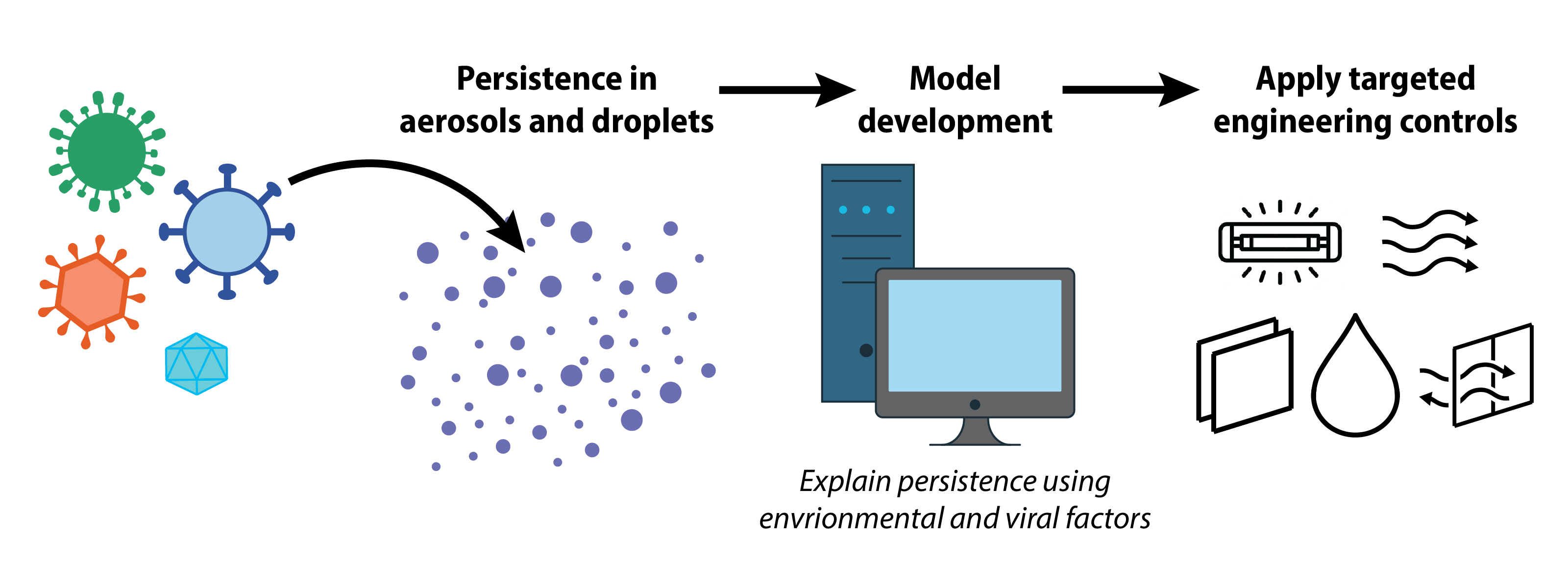Viral infections exhibit distinct seasonality. For instance, influenza virus largely displays winter seasonality in temperate regions, while parainfluenza virus typically causes waves of infection in the summer and fall. While factors such as virus persistence and transmissibility and changes in host response mechanisms under different environmental conditions are hypothesized causes of seasonality, the dynamics governing virus spread remain unknown.

Our lab is working to comprehensively assess and compare the persistence of important but distinct enveloped and nonenveloped viral pathogens in droplets and aerosols under a range of environmental conditions. This information will improve our understanding of the mechanisms driving environmental inactivation of particular microbes of interest. Using experimental data on a range of viruses, we can develop computational models to predict how respiratory virus persistence is impacted by environmental and viral (e.g., structural) factors. This work will define engineering treatments targeted at specific pathogens to rapidly reduce infectious viral loads in air or on surfaces during intervals of elevated community spread.
